






That’s how we help.
Switching your business is one of the most important decisions you’ll ever make. This is why we proactively manage the transition for you, to ensure minimal disruption to your business. We take end-to-end accountability until your business is fully banked, and a Business Banker is in play to look after the day-to-day relationship. It takes a bank that does more to help you start, run and grow your business.
For more information, contact:
Fathima Rahman
Email: frahman@fnb.co.za I Call: 087 328 0280
Eloise Heyduczek
Email: eloise.heyduczek@fnb.co.za I Call: 087 335 6859

- Frederick Wilcox
Published and Distributed by Business Industry Publishing Ltd
For any enquires contact info@business-pursuit.net
Production
Donnie Rust
Editor donnie@business-pursuit.net
Charles Brown Business Development Manager charles@business-pursuit.net
James Smith Operations Manager james@business-pursuit.net
Harry Lewis Accounts Manager harry@business-pursuit.net
Romain Vaast Project Manager Romain@business-pursuit.net
Design Felix Baldwin Design Assistant felix@business-pursuit.net
Harvey Tarlton Graphic Design harveytarlton.co.uk www.business-pursuit.net
If you would like more information about ways in which Business Industry Publishing can promote your business please call +44 (0)20 32878 795 or email | charles@ business-pursuit.net. Business Industry Publishing does not accept responsibility for omissions or errors. The points of view expressed in articles by attributing writers and/or in advertisements included in this magazine do not necessarily represent those of the publisher. Any resemblance to real persons, living or dead is purely coincidental. Whilst every effort is made to ensure the accuracy of the information contained within this magazine, no legal responsibility will be accepted by the publishers for loss arising from use of information published. All rights reserved. No part of this publication may be reproduced or stored in a retrievable system or transmitted in any form or by any means without the prior written consent of the publisher.
© Business Industry Publishing Ltd 2025
Welcome to the August 2024 edition of Business Pursuit Oceania, where we bring you the latest insights into the industries driving progress across the region.
This month, we spotlight SBS Friction in our lead article, “Success in the Industry That Stops.” As a leader in brake manufacturing, SBS Friction has perfected the balance between precision, safety, and innovation, proving that even in an industry built on stopping, progress never slows.
We also explore the future of automation with MHM Automation in “Everything Can Be Automated.” From streamlining manufacturing processes to optimizing efficiency, MHM Automation is redefining what’s possible in industrial automation, showing how technology continues to reshape the way businesses operate.
As always, we are proud to highlight the companies and leaders who are pushing boundaries and setting new benchmarks for success. We hope you find inspiration in their stories and enjoy this issue of Business Pursuit Oceania.
Donnie Rust Editor



Cassidy Banks



For sixty years, SBS has worked towards a simple goal, stopping people. And, having perfected the art of stopping two and four wheeled vehicles they have become the preferred OE and aftermarket brake pad supplier for motorcycles, scooters, ATVs and UTVs as well as a growing range of peripheral industrial applications like onshore and offshore wind turbines. As one of those unique sectors that often go unappreciated until they’re needed, there is a lot more to their portfolio than just brake discs and clutch kits.
Founded in 1964 in Svendborg, Denmark, the company employs over 120 people and supplies approximately 70 countries. Part of Brembo SpA they have become the go-to name of their industry, providing innovative braking solutions for a growing number of sectors. As fast as technology drives industry, SBS will be the ones helping them stop.
Together with the united Brembo-Group, SBS Friction A/S have set themselves
the task of being the main brake solution provider in the world, and in order to achieve this they have integrated their research and development, production, and products into the scope of harmonic, high-quality and performance solutions that are able to meet the rapidly evolving needs of the industry and market.
“We exceed expectations with a firm focus on innovation that improve not only product quality and performance levels, but also the industry’s environmental footprint,” says CEO Marco Moretti.
He goes on to explain that the source of their achievement comes from their core values of which he details as “The Three Ps to Go Ahead”. Firstly, there is a Passion for their products, their customers and industry impact. Persistence to serve their customers and market ongoingly with high-end, innovative products. Performance as a key indicator for their products, how they work and the service they give to their customers.
Moretti goes on to elaborate that part of their passion is to turn energy into inspiration.
This is how we are turning energy into inspiration.
At SBS, they envision a future where more people have passion in riding motorcycles, simply because it is fun, durable and safe. A future where SBS has an enhanced ability to use their more than 60 years of experience and energy to innovate braking excellence into their brake products, their production and in the end, the riders braking experience.
“This is how we are turning energy into inspiration, “he says, adding, “We work every day with a dedicated passion

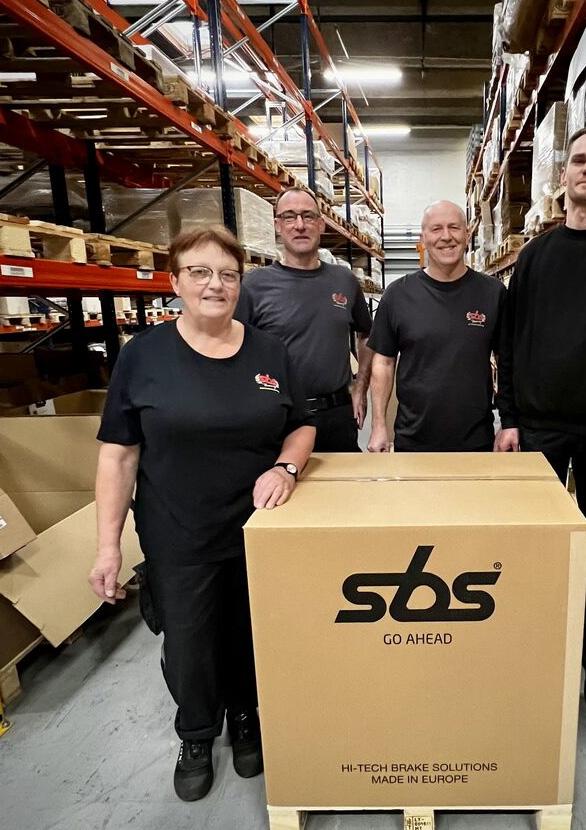

and persistence to serve our customers and industry partners, with best-in-class customer service and high-end innovative products that enable braking excellence.”
As such, every new brake product in their portfolio is designed with maximization of product performance and must be developed with sustainability in scope. That way, SBS takes its role in enabling Group synergies in Becoming a Solution Provider.
Mortti goes on to add that SBS Friction A/S is committed to complying with all applicable laws and regulations of the countries in which they do business and integrate sustainability, quality, diversity and safety into every aspect of their business to minimize the impacts of their products on the environment, to enhance their social responsibility and to maximize road safety for motorcycle riders worldwide.
The ongoing progression towards becoming the first fossil-free production plant in the motorcycle industry took a big step this year when they achieved their ISO 50001 certification of third energy management system. The certification was granted after a comprehensive audit of the company’s energy management system in all aspects of the company’s operations, which complies with the industry best practice according to the ISO 50001:2018 standard.
This achievement is nonetheless a significant sign of the fact that SBS is turning energy into inspiration and becoming the solutions provider they have strategized for. Following a progressive sustainability plan, they aim to be at the forefront of innovation when it comes to optimizing the way they work, the products they offer, and the impact they make, at a greater scale.
“The SBS energy management system is comprised of several energyefficient initiatives,” says Moretti, “Including the installation of a new cooling system that can reuse the excess heat from the production ovens to heat the building and the transition from gas to electricity utility usage in production, initiatives that have been appointed several sustainability awards already.”
The achievement is only made possible through the intracompany collaboration and hard work of all departments at SBS, and it is with pride we achieve the certification. The ISO 50001 energy management certification will be compatible and harmonized with their ISO14001 and ISO 9001 certifications, benefiting the workflows we have throughout.
SBS is continuously seeking
optimization solutions, especially since the company as an industry-first introduced the SBS Better Brakes transition. This important achievement enables SBS an improved ability to monitor and manage its energy consumption, not only for the environmental benefit but also for the benefit of the company’s operational cost.
And to truly drive home the fact that their products are not only sustainable but well ahead of their competition, SBS Friction A/S, took to the racetrack to prove their worth and the leading manufacturer of brake pads for motorcycle racing, tributes the podium as the 2024 edition of the Northwest 200 race comes to an end, with SBS Partners In Racing throughout all podiums in all race classes.
This year’s race, held on the north coast of Ireland, was a record-breaking event that saw Glenn Irwin claim his 11th consecutive Superbike victory, equipped with SBS 889 DS-2 brakes. The Northwest 200 is Ireland’s largest outdoor sporting event, attracting crowds in excess of 150,000 as well as the biggest names in the sport.
Glenn Irwin, riding the PBM Hager Ducati, made history by breaking the official lap record on a day of glorious sunshine, claiming pole position in the Superbike class after the opening qualifying session. He posted a speed of 124.895mph (200.999 kmh), 0.2 seconds quicker than Peter Hickman’s [SBS 985 DS-1/DS-2] official lap record speed of 124.799mph (200.844 kmh). All classes were close, with only milliseconds separating podium positions and requiring a lot of technical expertise from riders and teams in every brake sequence.
Allan Østli, Race Manager at SBS, commented on the technical difficulties of the race, explaining that the Northwest 200 is a challenging race that tests the limits of both the riders, their brakes, and their machines. The high speeds achieved in the long straights cool the brake system components and put immense pressure, load, and temperature on the brake pads when entering the extreme brake sections of NW, “Our brake pads are designed for these conditions and offer riders superior feel and consistent brake performance,” he says, “The Northwest 200 is more than just a race; it’s a testament to the skill, courage, and determination of the riders. We at SBS are proud to support these incredible athletes and their teams as Partners In Racing.”



Following a successful series of developments including the acquisition by Bettcher in November last year (2023) and the subsequent acquisition by Fortifi, MHM Automation is one step further to revolutionizing product handling across all conceivable sectors. We explore.
As part of the Fortifi Food Processing Solutions brand, MHM Automation has become part of a major endeavour to launch their unified platform of global leading brands and products, working within food processing equipment and automation solutions. This platform in turn connects them to business contingents in fifteen countries spanning five continents. As the overall owner, Fortifi provides solutions across the food industry including applications in protein, dairy, and fruits and vegetables. And, at the same time, their technologies enhance productivity, maximize yield, and improve worker safety for customers around the world.
As their Chief Executive Officer, Massimo Bizzi explains, Fortifi’s strategy is centred around a relentless focus on innovation, unparalleled customer service,
and expansion through continuous improvement and complementary acquisitions of other leading brands and capabilities. He adds, “As a strategic partner to our customers, we strive to offer a full portfolio of solutions across the food processing value chain.”
As he notes, the closing of MHM Automation’s acquisition and the incorporation of the New Zealand-based provider of post-harvest processing, protein processing, and packaging solutions is expected to further strengthen Fortifi’s capabilities. Their innovative, reliable systems and equipment will no doubt improve safety, optimize product quality, and extend their automation and robotics capabilities across a host of industries. In joining the group MHM have opened many new doors to new opportunities and developments.
Additionally, Fortifi has also signed definitive agreements to acquire two other businesses based in Europe. LIMA France which is a France-based supplier of meat-bone separators, deboners and grinders-desinewers, and Reich Thermoprozesstechnik GmbH which are
As a strategic partner to our customers, we strive to offer a full portfolio of solutions across the food processing value chain
the oldest Germany-based manufacturer of thermoprocessing food systems, both of which are expected to join Fortifi in 2024.
Still a fairly young organisation, the formation of Fortifi began in 2021 when investment funds affiliated with KKR, a leading global investment firm, acquired Bettcher Industries who remain a leading


I am thrilled to welcome MHM into the Fortifi portfolio, and I look forward to welcoming LIMA and Reich as well
provider of innovative protein processing tools. The following year, Bettcher acquired Frontmatec, a global supplier of automated pork and beef processing equipment, forming an end-to-end provider of protein processing solutions.
MHM’s recent addition brings interesting capabilities across new food processing segments and applications, including dairy and fruits and vegetables, and further expands Fortifi’s global reach by establishing an even stronger local presence in the Asia-Pacific region.
“I am thrilled to welcome MHM into the Fortifi portfolio, and I look forward to welcoming LIMA and Reich as well,” said Dan Daniel, Chairman of the Board of Fortifi. “The global footprint, technologies, and expertise these brands bring will help Fortifi continue to serve its customers with excellence.”
When it comes to the backstory of MHM Automation, one has to note the power of hard earned, entrepreneurial style business building. The value of this can’t be understated and it shapes much of this company’s narrative. MHM’s story began in 1884 in Christchurch, in the South Island of New Zealand. Founded and ultimately driven by innovation, continuous improvement and hard work, the company quickly evolved into a technology and automation led business, designing and delivering systems to many of the leading food processing companies globally.
The tale behind the New Zealand’s own growth is one of elite primary production. As a small country the inhabitants and their businesses had to learn to capitalise on every margin. When their arable lands and agricultural prowess proved viable, the close of the industrial revolution in the country marked the beginning of global expansion. Today, little has changed in this regard and New Zealand’s export industry is still focused on products from the primary sector.
As a company whose history spans more than 140 years MHM’s tale runs parallels to that of New Zealand’s development. MHM Automation exists to support the global food processing sector, through the design and supply of innovative, world-leading processing and handling equipment.
Their company’s legacy brands have helped shape the New Zealand and Australian engineering and manufacturing sectors. Years of acquisitions, growth, milestones, and perseverance saw the original group of businesses move to a single focused organisation known as MHM Automation.
Now, as part of the global Fortifi Food Processing Solutions group, the company has a further chance to continue to be involved in proper chain helping to provide full-lifecycle automated solutions to Fortifi’s extensive clients. Working collectively with Fortifi, MHM believe they can improve a single line or automate an entire food processing plant, anywhere in the world, according to their website.
Even as a member of a larger organisation, MHM Automation is still a business built on a constant drive to innovate, which is one of the reasons they were acquired in the first place. This outstanding quality keeps them pushing to develop solutions that can enhance efficiency and drive growth in businesses. It’s this kind of initiative which is why MHM have been able to provide automation solutions in so many varied sectors. As such, MHM Automation bring to the table expertise in the whole food industry including meat and poultry, dairy, food and beverage processing and fruit and vegetables. Then, timber and sawmilling, agriculture, grain and feed, logistics, industrial and work in Antarctica! They’ve created stainless steel fabrication for sculptures and architectural features for domestic and commercial properties, automated storage and retrieval systems including ASRS shuttles and elevators, custom designed storage tanks for chemicals and acids, autonomous mobile robots for pallet and crate automation and bataprep gusseters which, in case you didn’t know, are the specialised machine used to prepare bagged cheese blocks for vacuum sealing.
What this proves is that while the requirements for different industries differ greatly, at their base the approach and procedures, the “circuitry”, if you will, is the same. Almost everything can be automated, and automation is key to progression, development and growth.
TLC Aged Care
Foylan Rhodes

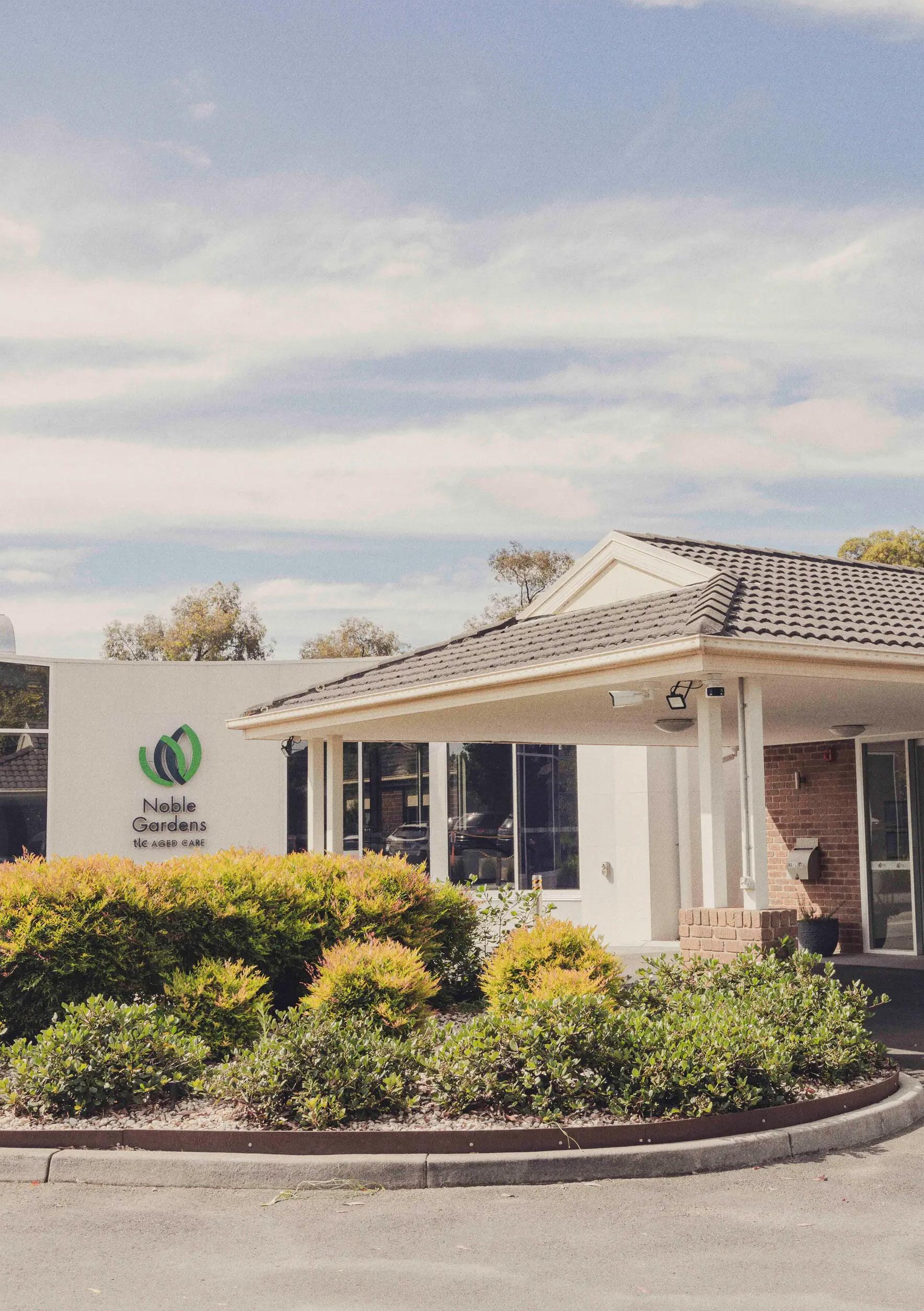
Baldasso Cortese operates across Australia and New Zealand in the major sectors of Care, Education & Multi Residential / Mixed Use
As a proud business partner of TLC Healthcare, we are a client and outcome focused practice
Our Care sector team is passionate and committed to designing buildings that are responsive to the needs of the people they will serve across Aged Care, Seniors Living and Healthcare projects
Our design process is interactive, inclusive and delivers cost effective operational outcomes tailored to each client and project





TLC Aged Care is on a mission to redefine senior living by pioneering innovative and integrated healthcare solutions that promote wellbeing throughout communities. Through strategic investments, the organization is revitalizing aged care in Melbourne and Geelong, providing residents and the broader community with access to integrated healthcare services and exceptional standards of care and comfort.
TLC’s journey began in 1991, thirtythree years ago, with the founding of TLC Aged Care and the acquisition of their first residential aged care home in Geelong, Australia. Since then, TLC has grown steadily and now owns and operates twelve residential aged care homes across metropolitan Melbourne and the city of Geelong. In 2015, TLC Healthcare was founded, aiming to revolutionize healthcare in Australia by integrating medical centres and their training organization into its core business
of residential aged care. This strategy has driven diversification, resulting in Australia’s first multi-generational healthcare precincts blending aged care homes, medical centres, gyms, early learning centres, an RTO, and cafés.
As pioneers in integrated healthcare and lifestyle services, TLC brings together the young and the elderly through intergenerational programmes between aged care residents and children at their early learning centres. Additionally, TLC offers co-located medical centres, health clubs, allied health centres, and commercial cafés. The organization also supplies healthcare consumables to other providers and has recently expanded its product range to include cleaning products and stationery.
Innovation doesn’t stop for TLC. Early learning centres, health clubs and cafes are being added to existing sites. Plus, their development pipeline plans to deliver Australia’s first integrated healthcare precinct that incorporates
We are now commencing our next ten-year development pipeline to deliver the final element of our 2013 vision, being the colocation of Day Surgeries on our intergenerational sites
a co-located aged care home with 5-star suites, medical centre, health club, gym and wellness centre, day



spa, sporting facilities, commercial café and a day surgery.
A general scope of their services includes residential aged care homes, medical centres, early learning centres, commercial gyms and clubs. There are also cafes and education and training opportunities and a logistics and distribution centre, they are also on their way to launching TLC Day Surgery as a new product.
Quite recently, TLC launched a major integrated multi-media campaign across TV, radio, out-of-home, press, digital, and social media starting on September 11th, 2024. This followed the Federal Government’s earlier media campaign on elder abuse where distressing industry statistics were highlighted, referencing findings from the Royal Commission into Aged Care Quality and Safety, and showcasing how TLC’s “Life Changing Care” serves as a beacon of hope in an often-challenging sector. According to Chief exec and managing director of TLC, Lou Pascuzzi, this is a complex issue.
“It is widely acknowledged that there are significant challenges in aged care,” he says, “The Royal Commission into Aged Care Quality and Safety identified that the system’s current state, marked by inadequacies, calls for substantial reform. Many providers are struggling due to insufficient funding, overwhelming demands, or lack of expertise. Highlighting, rather than concealing, these problems is crucial for understanding how to improve and transform the future of aged care.”
He adds that while there’s been much talk about how to improve the situation, in reality there has been very little action from all stakeholders since the Royal Commission. Which is why TLC has refused to sit on their hands and do nothing, waiting for someone else to provide the solution, or using the excuse of the absence of any action from the Aged Care Taskforce Report recommendations.
“Our approach has been not to wait, to ignore all the industry noise,” he says, “ And to drive our vision, known for delivering innovative healthcare solutions to the communities in which we operate.”
He explains that since he became CEO in 2013, they have fully delivered their Integrated Care Vision, with highlights including bringing Doctors back to aged care by opening community medical centres co-
located with every one of their twelve residential aged care homes, which has halved resident hospitalisations. They have eliminated the use of agency staff, by training their own people via their Registered Training Organisation providing a more robust continuum of care and avoiding workforce shortages. They’ve introduced Early Learning Centres co-located with their residential aged care homes promoting a truly intergenerational environment and colocated large commercial gymnasiums to complete the deinstitutionalisation of aged care.
“And” he adds, “We are now commencing our next ten-year development pipeline to deliver the final element of our 2013 vision, being the co-location of Day Surgeries on our intergenerational sites.”
The pipeline encompasses three brownfield and three greenfield developments equating to a circa $400m investment. TLC partnered with creative agency Howatson + Co and media agency Jaywing for the campaign’s development and media buy.
Matthew Mellow, who is the Chief Marketing Officer, leaned in saying, “We wanted to partner with agencies that believed in what we wanted to say. People who understood that healthcare, with aged care at its heart, didn’t have to reflect the negative and disturbing issues exposed by the Royal Commission into Aged Care Quality and Safety and current federal government reports.
The facts speak loudly to anyone who cares enough to acknowledge them. The difference is that TLC has taken a proactive approach, resulting in the delivery of a unique integrated model of care that’s been driven by changes in consumer expectations, now referred to as ‘Life Changing Care’.”
According to Mr Pascuzzi this is a significant milestone for TLC. He explains that he has witnessed the category, and providers vacillate over funding and wait for bail outs and has personally seen the inertia of effective decision making at all levels. On their side, having developed a unique, integrated care platform for TLC’s services, he felt it was time to proactively demonstrate to the market that there are some providers who don’t wait around for others to fix their problems.
“As our commercial says, “It’s time for life changing care”, which is exactly what TLC is delivering across our services and brands,” he concludes.
OceanaGold Corp
Foylan Rhodes



Under the leadership of Gerard Bond, company Chief Executive, OceanaGold Corp have set themselves the task of mining gold for a better future. The gold, copper, and silver they produce are essential to the renewable energy and transport sectors, life-saving medical devices and technology which connects communities around the world. The modern era of digitalisation, connectivity and prosperity we find ourselves in would be impossible without the mining industry. But as OceanaGold is proving, there are areas where improvements can still be made.
“Our activities contribute to economic growth and improved health and education outcomes in the regions where we operate,” Gerard tells us, “In fact, we provide direct employment for over 3,700 people and indirect employment for many more.”
A company whose success can be attributed to their attention to staff as much as shareholders, OceanaGold Corp fosters a work atmosphere where a combination of care, respect, integrity, performance and teamwork emboldens them to make changes to their industry. As a growing
intermediate gold and copper producer the company is able to maximise the generation of Free Cash Flow from their operations and deliver strong returns through their portfolio of four operating mines: the Haile Gold Mine in the United States of America; Didipio Mine in the Philippines; and the Macraes and Waihi operations in New Zealand.
Founded on the principles of responsible mining and sustainable practices, OceanaGold Corporation has evolved into a prominent player in the global gold mining industry. Originating in New Zealand, the company has grown its operations and influence worldwide, carving out a name not only as a gold producer but also as an organization deeply committed to environmental stewardship and community engagement.
Established in 1989, OceanaGold traces their roots back to New Zealand’s historic mining industry. The founders envisioned a company that would blend traditional mining methods with emerging environmental and social governance (ESG) standards. Initially,
OceanaGold focused on projects within New Zealand, primarily the Macraes Goldfield in Otago, which remains a cornerstone of their operations and the largest gold-producing mine in the country.
The founders’ ethos emphasized mining responsibly and sustainably and from the outset, they prioritized protecting New Zealand’s pristine landscapes while delivering economic value. As Gerard says, “This philosophy has guided our expansion into other regions, including the Philippines and the United States and has cemented OceanaGold’s reputation as a leader in sustainable mining. But our most defining feature remains our loyalty to staff.”
One of OceanaGold’s defining features is their commitment to their workforce and Gerard emphasises the pride in being to create a safe and empowering workplace, where employees are encouraged to develop their skills and advance their careers. He details how OceanaGold emphasizes robust training programs, career progression opportunities, and a

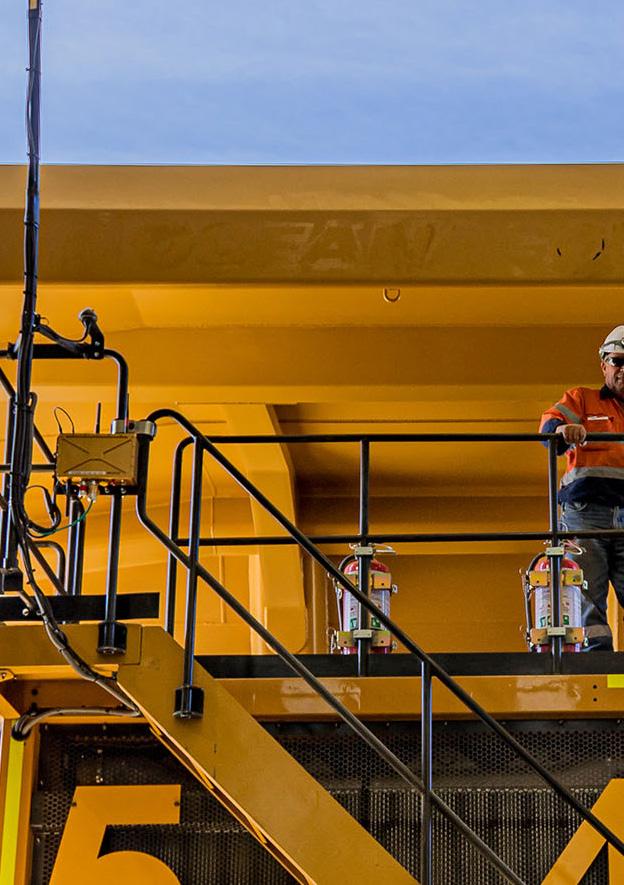

company culture that prioritizes safety and well-being.
“In recent years, we have introduced several mental health and wellness programs aimed at supporting employees and their families,” he says, “This holistic approach to workforce management has not only bolstered staff retention but also strengthened OceanaGold’s reputation as an employer of choice in the mining industry.”
Gerard Bond brings extensive experience in global finance and the resources industry to OceanaGold Corporation. Prior to his appointment as President and Chief Executive Officer in April 2022, he served as Finance Director and Chief Financial Officer at Newcrest Mining Limited from January 2012 to January 2022, a period marked by significant operational, financial, and growth transformation. Before joining Newcrest, Gerard spent over 14 years at BHP, a position that provided him with a comprehensive understanding of corporate finance, mergers and acquisitions, treasury, and human resources across North America, Europe, and Australia.
With experience encompassing gold, copper, nickel, and aluminium, his appointment as the leader of OceanaGold Corp was based on his proven track record of driving performance and delivering on business potential. It also put OceanaGold Corp into a position of benefitting from his understanding of all levels of the business and what it takes to achieve their ultimate goals which are centred around sustainability and responsible mining.
As a long-time advocate and leader in responsible mining practices, the company has developed and implemented advanced environmental management systems to reduce their footprint, particularly in terms of water and energy use. Gerard reveals that these efforts align with their “zero-harm” environmental policy, aimed at preventing negative ecological impacts in the areas where they operate. Additionally, the company’s commitment to responsible mining also extends to its community engagement efforts.
“OceanaGold has invested significantly in local communities,” Gerard elaborates, “Where we have created job opportunities, improved infrastructure, and funded education initiatives.”
In the Philippines, for example, their Didipio Mine has become a model for
community involvement, providing jobs and supporting local development while maintaining high environmental standards.
As of 2024, OceanaGold is making strides in several key areas. The company has continued to push boundaries in technological innovation, focusing on digitalization and automation to optimize mining efficiency and safety. A highlight of their recent technological initiatives is the integration of artificial intelligence to enhance ore processing and reduce waste, contributing to both cost efficiency and environmental goals.
OceanaGold is also expanding its North American footprint, with new exploration projects in Nevada, USA. These projects signal a strategic move to capitalize on the region’s rich resources while adhering to stringent U.S. environmental standards. The new developments are poised to boost the company’s output, further strengthening its position in the gold mining industry.
In alignment with global climate goals, OceanaGold continues to invest in renewable energy projects to power their operations. At their Macraes site in New Zealand, for instance, the company has recently completed the construction of a large-scale solar farm designed to meet a substantial portion of the mine’s electricity needs. This initiative is part of OceanaGold’s ambitious target to achieve net-zero carbon emissions by 2050.
While OceanaGold Corp stands as a testament to the mining industry’s potential for positive impact, Gerard is aware that more can and should be done. However, through their forwardthinking approach to environmental management, community development, and employee welfare, the company is set to push these positive developments further than many competitors and have set a benchmark for others to follow. As they expand into new markets and explore innovative technologies, OceanaGold continues to demonstrate that mining can be both profitable and sustainable.
“We are well-positioned to meet the evolving demands of the mining industry,” says Gerard, “And we continue to embody a bold legacy that prioritizes people, planet, and above all progress.”


Property management is a multifaceted industry with many operations seeking to specialise in something simple or small, but GK Strata Management (‘GK’) relishes a challenge and as such, has forged an immaculate reputation in the competitive strata management sector. What’s so tricky about this particular subgenre of property? The sheer scale.
Strata properties are those with multiple units inside, plus numerous common areas, hence they can be anything from residential to commercial or community initiative-led. Each variation requires a different approach and alternating experiences, but GK has sourced a spectacular team, each member of which brings a unique combination of aptitude, contacts and ambition with them. If they’ve never managed a particular type of property before, it doesn’t matter, because with over 35 years of industry knowledge, a custom and conscientious solution can and will be found,
“Our strata managers put customer service first. Their key function is to provide information, advice and solutions for all
your strata issues. We further exceed our clients’ expectations through our extensive industry knowledge, technology, informed and dedicated employees and our genuine enthusiasm for strata management.”
A portfolio to be proud of
Currently, GK is proud to manage close to 450 individual strata schemes, which translate into more than 10,000 lots and it’s the residents that are being put first. With a firm mandate in place to help people enjoy their living situation, regardless of the type of property they are in.
Few schemes are the same and GK recognises this, stating that it doesn’t make a difference whether you’re in a heritage building, a simple walk-up or an estate of villas; they can manage anything and with a personable approach that never leaves anybody feeling out of touch. There’s no preferential treatment dependent on property type, nobody is a second-class citizen and all clients are given the same time, energy and focus. This is a unique and much lauded service element and also, what

makes the company stand out in a sea of property service offerings.
Our strata managers put customer service first. Their key function is to provide information, advice and solutions for all your strata issues
At your side
Respected, recommended and with many people wanting to work with them, GK could easily sit back and allow its reputation to carry it through but that’s not the ethos of the team. Rather, they commit to constant learning, staying abreast of new legislation and technology and aim to be the standard by which every other company in the sector is judged. That sounds like a high mantle, but from small considerations through to operation-defining innovations, GK really is a different kind of strata management set-up. Some of the most notable service improvement elements include:
Secure portal access - For owners who don’t want to be buried beneath paperwork, GK has invested in technology to keep everything digitally accessible, 24/7. By-law updates, meeting minutes and notices are all added when appropriate, meaning owners are never in the dark or taken by surprise.


Expert, compassionate staff - Everyone at GK has legislation qualifications and most hold a strata licence themselves. The management were also extremely keen to embrace the culturally diverse world we live in by selecting a bilingual staffing body, to avoid communication errors. It’s a small detail, but being able to talk business in your native tongue makes a huge difference.
Constant contact - All managers are able to access portals, emails and relevant information remotely. GK knows that this can be a make-or-break issue and expects



nothing less than a fast response to any and all queries. If it’s causing concern or distress, it needs to be dealt with as a matter of urgency and that’s why GK is never off the clock.
Reliable networks of personnel“Our dedicated repairs and maintenance department manage all common property repairs on behalf of the Owners Corporation, so issues are resolved in an efficient and timely manner. We also hold extensive knowledge and experience in the remedial repairs process.” The sheer convenience of not having to source, vet and coordinate repairs is an enormous weight off the minds of property owners and a service in and of itself.
The question is, how can one company
community living sector since 1948 and today, is Australia’s number one property services provider. GK is one specialist arm of the group, located in Sydney, but it operates within the PICA framework that strives for excellence in operation and satisfaction for strata owners. It just adds some extra local knowledge and passion into the mix as well, as regional experience gives a more tailored insight.
The PICA name inspires confidence and trust and so it should,
With more than 200,000 lots under management, we have grown from managing Australia’s first strata-titled property to becoming leaders in community living
offer such a broad scope of services? The answer is simple and lies in the overarching PICA Group ownership.
A parent company with heritage
The PICA Group has been an integral part of the
“With more than 200,000 lots under management, we have grown from managing Australia’s first strata-titled property to becoming leaders in community living. As a market leader, we offer a comprehensive range of services through a family network of businesses. From strata and facilities management to debt recovery, legal, and developer services, we continue to enhance Australia’s community living. Regardless of property type, whether it is residential, commercial or mixed-use, we care for one of life’s most valuable assets: your investment and home.”
By creating a business model with smaller subsidiaries, the geographical reach of the overall group has become countrywide, without ever having to worry about diluting the attention that each individual manager can offer. That’s the power of a 700+ workforce, spread out over 30 locations and working under the banner of 16 focussed companies. But let’s add another number into the mix, perhaps the most impressive: $72 billion. That’s the monetary value of all the properties being expertly maintained by the PICA Group and it’s staggering, especially given the continued importance placed on personal connection and communication with clients.
With a global pandemic to contend with, the GK client priority mandate was tested to its limit but as the world looks to recover and get back to ‘normal’, GK is in a strong position and ready to work. No client enquiry is too big or small, no by-law will go unnoticed and no maintenance will fall by the wayside, because that’s simply not the PICA way.
Donnie Rust

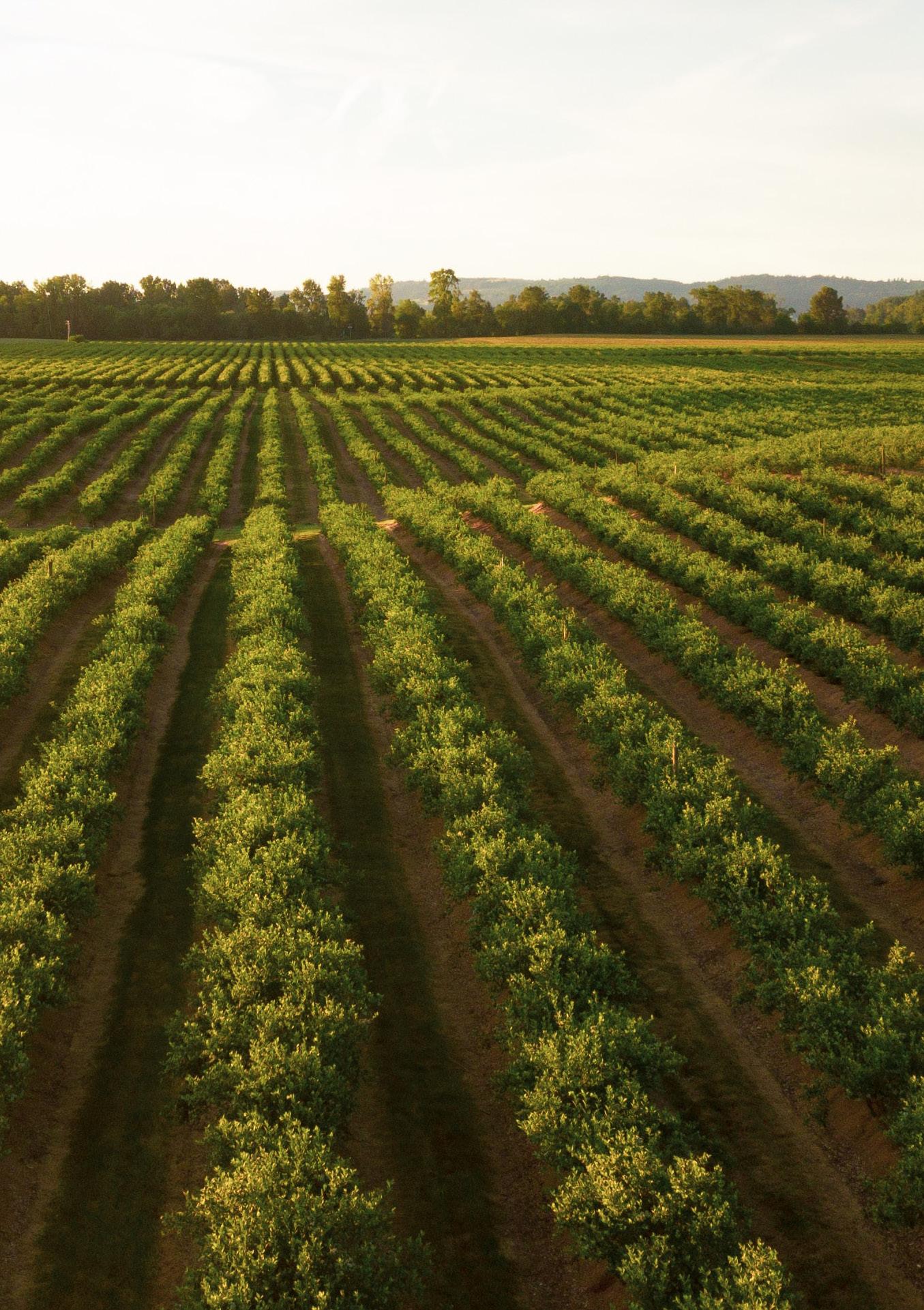
Australian enterprise Wide Open Agriculture is more than just a company but a movement that is dedicated to redefining the landscape of agriculture through passionate and productive sustainability. Proving that once a good idea takes root, it will grow and flourish given the opportunity, the company is making changes to the sector by reforming it into a regenerative and ethical arena both wide and resplendent with possibilities.
Founded with a vision to transform the way humanity approaches food production, Wide Open Agriculture believes that the land, when treated with respect and care, yields not only abundant harvests but flourishing ecosystems. The company’s journey began with a commitment to break free from conventional norms and cultivate a future where agriculture coexists harmoniously with the environment.
Beyond sustainability. The ‘wide open difference’
Run by Chief Executive Officer Jay Albany, who has spent his career building better networks to access quality food, Wide Open Agriculture goes beyond sustainability
and embraces regenerative farming practices that breathe life into the soil, restore ecosystems, and support thriving communities. Seeing the agricultural sector as stewards of the land, he recognises the responsibility of those in the sector to preserve it and the interconnectedness of their actions. This is the Wide Open Difference, bridging the gap between what is being done and what is possible.
More than simply a name, Wide Open Agriculture is a philosophy that extends beyond their fields. They champion local farmers, source responsibly and prioritize the well-being of communities. By fostering partnerships with those who share their values, they are creating a positive ripple that will grow to encircle the world.
In an industry where transparency is increasingly important, Wide Open Agriculture takes pride in every step of their process. From the cultivation methods employed, to the journey taken by their produce from soil to plate, everything is openly shared and available for scrutiny.



Through them, the origin of a meal can be traced all the way back to the very seed in the dirt.
At the heart of their comprehensive agricultural initiative lies the Dirty Clean Food (DCF) business unit. This is a strategic collaboration with regenerative farmers redefining conventional paradigms in the food supply chain.
Operating under the Dirty Clean Food brand, they proudly spearhead the creation of premium beef, lamb, poultry, and pantry staples in partnership with regenerative farmers. These products find their way to their loyal customers via a diverse distribution network of independent grocery stores including Coles Local, and some of Western Australia’s most esteemed fine dining establishments.
Making use of digital access, and always on the very bleeding edge of innovation, they’ve gone beyond traditional models and Dirty Clean Food extends its reach through an online store, offering homeowners access to a digital realm where they can delve into the narratives behind the regenerative farmers and discover a thoughtfully curated selection of products. Some of which may surprise you.
By streamlining supply chains and eschewing the overheads associated with brick-and-mortar retail, Dirty Clean Food ensures that regenerative farmers receive a premium for their commitment. This not only champions sustainability but positions the brand to provide consumers with exceptional products at competitive prices.
At the core of Dirty Clean Food is a commitment to reshaping the landscape of food production and consumption and part of this involves the age-old implementation of espionage behind enemy lines. What do we mean by this? Lupins.
Lupins have been eaten since the time of the pharaohs, who recognised its value as a nutritious and versatile crop. At Wide Open Ingredients, another arm of the company, they have revolutionised the lupin as a food source. Then, combining the benefits of regenerative agriculture with their patented technology, they have been able to produce a nutritious, and importantly, sustainable plantbased protein that is highly functional and versatile to meet the needs of all.
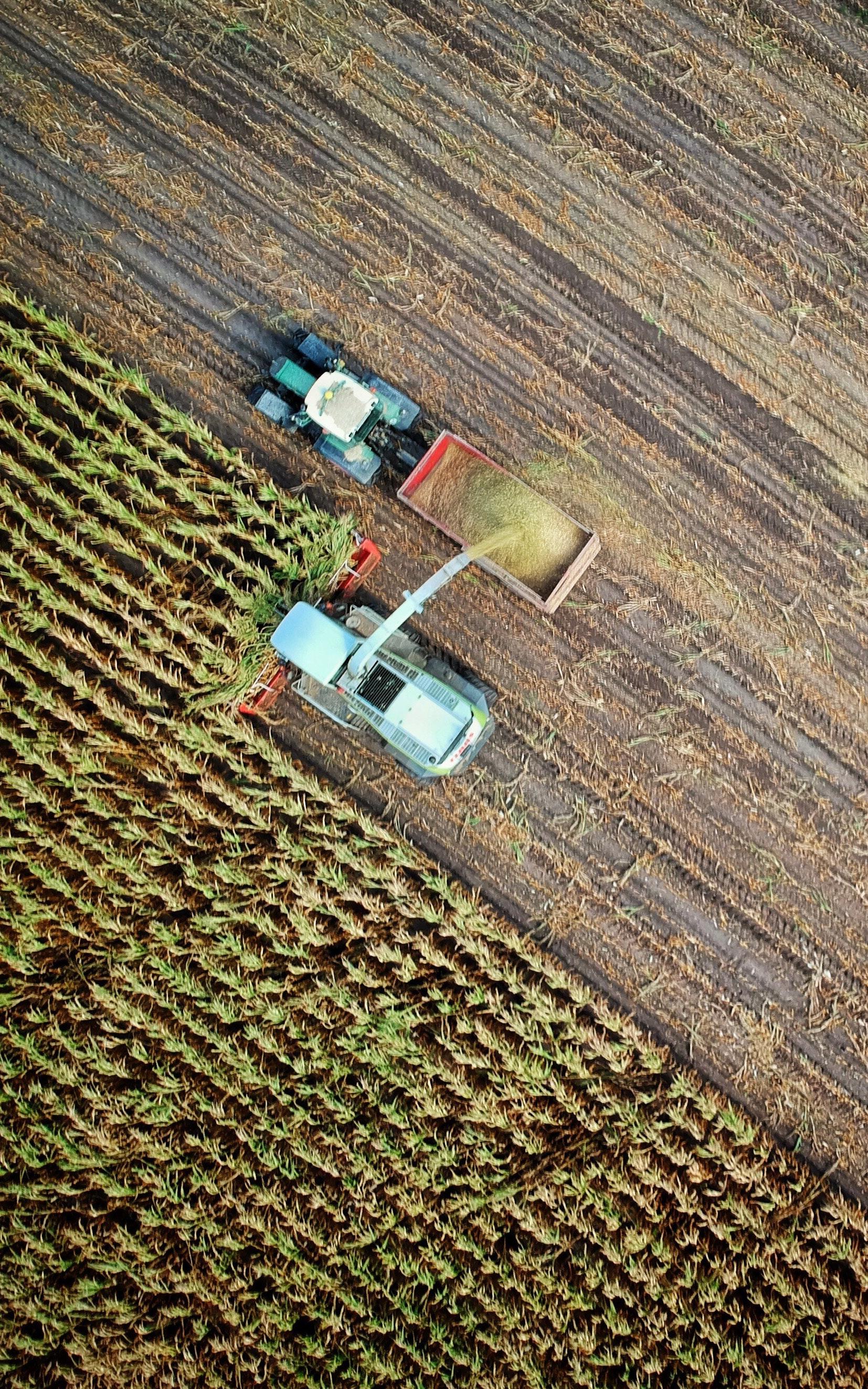
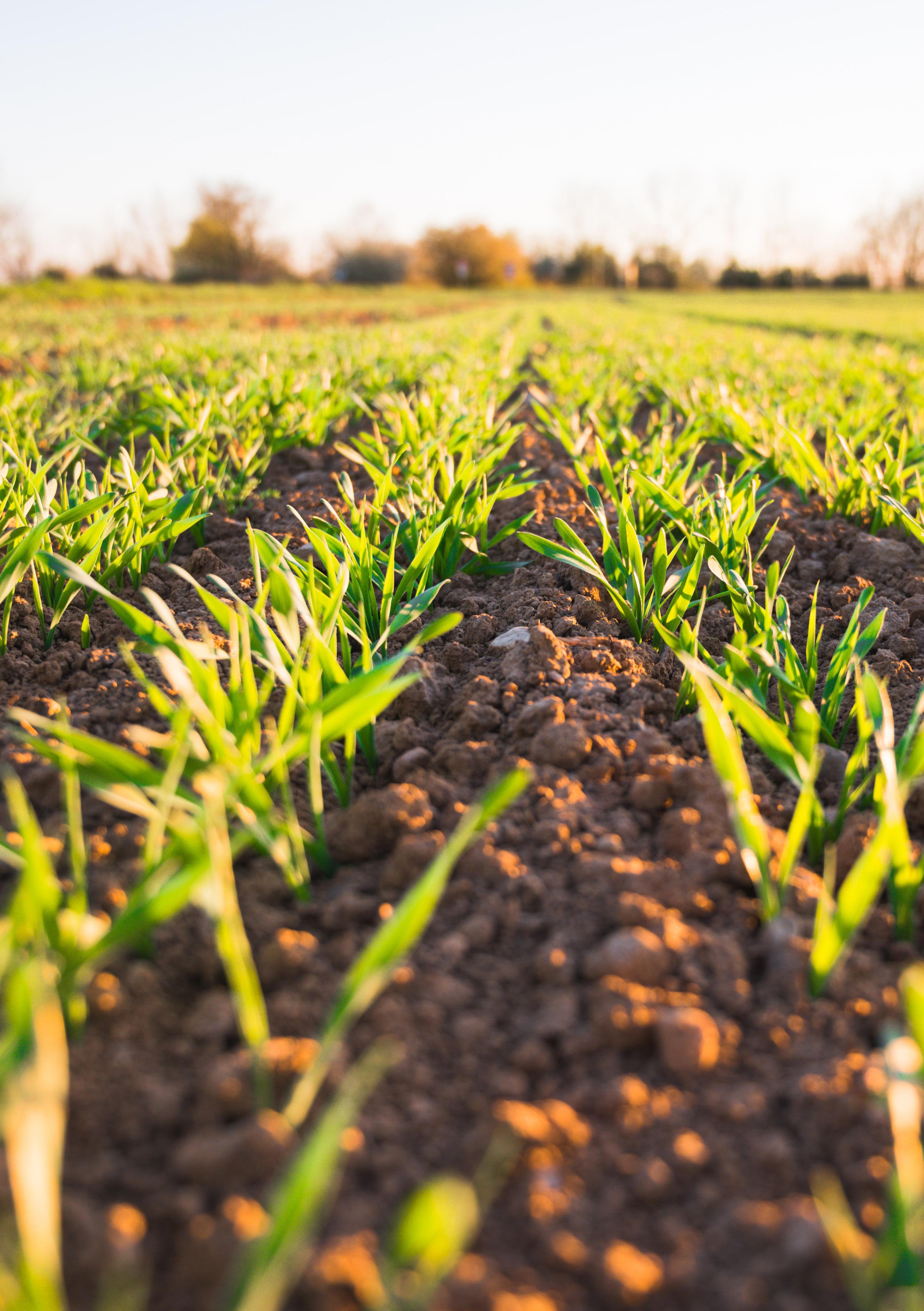

Before we jump into lupins, let’s quickly touch on Wide Open Ingredients which is a division of Wide Open Agriculture, that focusses on regenerative agriculture. This is a combination of farming principles and practices that work with, rather than against, natural systems. These practices increase biodiversity, enrich soils, restore the water cycle and enhance ecosystem services. Regenerative Agriculture helps reverse climate change by drawing carbon back down into the soil which can increase resilience to climate instability. It keeps soil
Already, Wide Open Agriculture produces oat milk enriched with lupin protein...
and farmlands healthy for crops and involves other practises that nourish the land in the same way that a healthy, and concise diet improves the lives of you and me.
Lupins play an important role in a Regenerative Agricultural system since they
are an ideal ‘break’ crop, fixing nitrogen into the ground creating healthy, nourished soils. Growing lupins has been scientifically proven to reduce greenhouse gas emissions by up to 50% in a two-year rotation of wheat and lupins. In Australia lupins are already a staple crop, with over 80% of the world’s supply being grown in the region.
In 2023, an international team of researchers identified the “sweetness gene” responsible for low alkaloid levels in lupins. This discovery is expected to accelerate the development of new bitter-free crops and another protein source for plant-based foods. Lupins, which are a legume from the family Fabaceae, rival soybean in protein content at an impressive 44% while being high in fibre and low in sugars. Moreover, lupin crops are climate tolerant and have a great potential to recover poor soils. However, this legume naturally accumulates bitter and toxic alkaloids unpleasant for the human palate, which is why this sweetness gene could be the spoon full of sugar the industry has been waiting for.
Already, Wide Open Agriculture produces oat milk enriched with lupin protein, this is thanks to them having previously developed a technology to make lupin concentrate powder with a neutral flavour that can be added to many different recipes for food and beverages. Farming methods have been constant for centuries, so if you want to change something you must make sure you get those seeds of innovation planted fast and widen your ambition.
Ravenswood Gold


Ajoint venture, Ravenswood Gold is co-owned by EMR Capital and Golden Energy Resources Limited. Together, the two acquired and set about operating, developing and exploring the Ravenswood Gold Mine, found 130km south of Townsville, in Australia.
EMR brought the financial power to the arrangement, as a private equity manager with a proven track record in successfully investing in mining projects. Golden Energy, as the name might suggest, is a leading light in the energy and resources industry and a specialist in the realms of mining for various payoffs, including gold. It is also a key investor in numerous Asian renewable energy projects.
The two saw the potential for high yields from the ravenswood site and as such, went into partnership. Their confidence came from the fact that more than four million ounces of gold had been successfully removed from the mine, since 1868. It is said that a further four million ounces are still locked away in the rock and the joint venture hopes to see at least 2.7 million of it removed in the next 13 years.
A mining town with a proud legacy Ravenswood town has a longstanding
history and good relationship with the mining operation. As the mine has expanded, it now stands just a few hundred metres from the edge of the residential area, but relationships have been maintained. This is chiefly because Ravenswood Gold seeks to be a hospitable and considerate neighbour, a fact bolstered by the company’s sustainability mandates.
“Ravenswood Gold is committed to working responsibly and sustainably to protect and preserve the people, environment, community, and heritage associated with our operations,” the company states.
“We acknowledge that the Traditional Owners of the land on which we operate, the Birrah People. We pay our respects to Elders past, present, and emerging, their culture and country. We extend our respects to all Aboriginal and Torres Strait Islander People in our community.”
A three-pronged approach to sustainable operation
Community, environment and economy. These are the three separate but connected areas in which Ravenswood Gold tries to make a meaningful contribution.
“Our project has brought mining

closer to the town, so we’re working hard to minimise impacts, especially during the busy construction phase,” Brett Fletcher, CEO of Ravenswood Gold said in a statement.
He continued: “We’ve also been improving and supporting local infrastructure
Ravenswood Gold is committed to working responsibly and sustainably to protect and preserve the people, environment, community, and heritage associated with our operations...
and services, including Ravenswood school, health services and roads. When it comes to the environment, we are using new technology to reduce our footprint and decrease our water use.”
With more than 30 years in the game, Fletcher is experienced enough to know how to make operational improvements that will produce results.
As with any existing site, modern additions and expansions are necessary to unlock potential. Ravenswood is no exception and committed to a period of significant expansion in 2020.
The intention is to increase gold production to over 200,000 ounces a year, to stay on target to uncover 2.7 million by 2035. The new infrastructure and improvements will offer increased longevity of the site and will include the remaining of existing open pits.
Alongside investigating Buck Reef West and Sarsfield/Nolans open pits, the on-site processing plant will be enlarged, with a brand new tailings storage facility in the works as well.
To power the developments, Ravenswood Gold has committed to becoming a major employer in the area. At



last count, 320 permanent staff were on the books, with more already planned and up to 470 contractors brought in daily.
“Around 90% of Ravenwood Gold’s permanent workforce live in the region and drive to and from places such as Townsville, Charters towers, and The Burdekin,” the company proudly reveals.
In addition, in excess of 300 local businesses have been subcontracted to work on the expansion project.
One of the most notable local partnerships was with an expert heritage stonemason, who repaired three chimneys on the site and the safe dismantling and storage of a further three. Originally earmarked for destruction, the three dismantled pieces are being considered for future public display reassembly or research. The move
Around 90% of Ravenwood Gold’s permanent workforce live in the region
forms an important part of the overarching commitment to treasuring resources and protecting the site, not exploiting it.
The greenest mine in existence? While it’s hard to know how environmentally-
focussed other mining companies really are, Ravenswood has put policies and monitoring systems in place to ensure that the planet is not being forced to suffer for a gold rush.
“Ravenswood Gold prioritises water recycling and has worked with key contractor Ausenco to design the new processing equipment in a way that minimises water and energy use intensity. Around 80% of mine water usage is recycled water, with fresh water usage restricted as much as possible,” the company explains.
In addition, an extensive network of monitoring equipment has been installed to manage any and all impacts of the mine’s operations on the surrounding environment. This includes water monitoring, air quality and noise and vibration reduction across the operational site and surrounding town.
Finally, Ravenswood has made a commitment to protect the flora and fauna that reside in close proximity to the mine and its open pits. Professional Fauna Spotter Catchers were hired to capture and safely relocate a number of animals ahead of sire clearing activities with 447 individual creatures, representing 32 species, successfully moved.
The Australian mining sector managed to stay relatively buoyant, despite many other global industries going on hiatus. Ravenswood is garnering attention for its high potential site, ethical operation standards and sector-leading approach to building relationships with local communities.
The more successful Ravenswood is, the better for the people that work and live there, which is why the company is absolutely going for gold, Down Under.